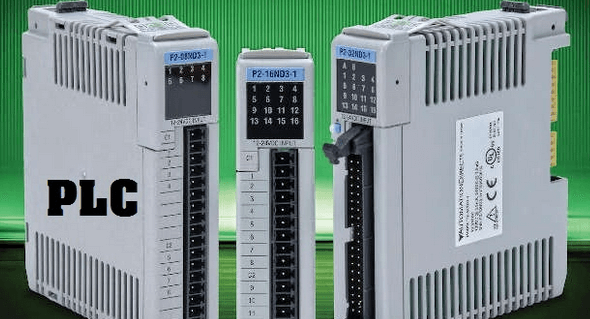Ever asked yourself what is a PLC? If you work in the field of engineering you have probably heard about terms such as tripcodes, plc, and much more. In this article, you will learn more about the history of PLC and discover how it works.
A programmable logic controller, or PLC, is a system that is programmed and used to regulate or control a system or machine. PLCs are used in various industries, including hardness testing machines, injection molding machines, and fully automatic production systems.
Specific functions such as sequence control can be implemented in PLCs, to control both the input and output signals of processes or machines.
Historical digression: Programmable logic controller
We do not know when the success story of programmable logic controllers began exactly, or at least it is controversial. On the one hand, the origins of the PLC are dated to the end of the 1950s – because many authors see 1958 as a milestone for programmable logic controllers with the registration of the “Simatic” brand, which has meanwhile become a synonym for PLC. Other authors date the beginning of PLC technology to the end of the 1960s and argue that the programmable logic controller was developed in the United States of America at that time.
At that time, demands were being made by the automotive industry that a flexible replacement for conventional electromechanical controls was necessary. This, in turn, was attributed to the fact that traditional controls were no longer able to cope with the rapidly increasing degree of automation.
The developer of the PLC is generally considered to be Richard E. Morley, who in 1969 presented a Modicon, i.e. a logic system based on a semiconductor. A few years later, in 1974, the first PLC from Klaschka and Pilz came onto the market in Germany. In 1979, other manufacturers in Germany followed suit. Since then, numerous manufacturers have established themselves on the European market. While some of the 300 or so companies produce programmable logic controllers for almost all purposes, most manufacturers have specialized in very specific niches.
How a PLC works
If it is a simple PLC, it has inputs, outputs as well as an operating system, i.e. firmware, and an interface. The respective user program can be loaded via this interface. This also defines how the outputs are switched depending on the inputs.
The operating system also guarantees that the user program always has the current status of the encoders. Ultimately, the outputs are switched based on the user program so that the system or the machine works in an intended manner.
To connect the programmable logic controller to the system or machine, we use both actuators, which are generally connected to the outputs of the programmable logic controller, and sensors. We use status displays too. The sensors are located at the PLC inputs, through which the programmable logic controller receives information about what is going on in the system or machine.
PLC can be implemented in different ways. It can be realized as a single device, as a software emulation as a PC card. There are also modular solutions in which the PLC is assembled from several plug-in modules.
In the case of individual devices, they have different advantages in terms of miniaturization and are cheaper when performing smaller automation tasks. On the other hand, if it is a question of devices that have a modular structure, they have the characteristic advantages inherent in a modular system. In general, there is problem-free expandability, enormous flexibility, and cost savings due to the use of a large number of identical modules; these can also be produced in large numbers.
PLC manufacturers (selection)
Programmable logic controllers are produced by various manufacturers worldwide, with Siemens being the company with the largest market shares in the world. The largest PLC manufacturers around the world include:
Siemens
Rockwell Automation
Mitsubishi Electric
Schneider Electric
Omron
GE Fanuc
Eaton (formerly Moeller)
Hitachi
Fuji Electric

Krishna Murthy is the senior publisher at Trickyfinance. Krishna Murthy was one of the brilliant students during his college days. He completed his education in MBA (Master of Business Administration), and he is currently managing the all workload for sharing the best banking information over the internet. The main purpose of starting Tricky Finance is to provide all the precious information related to businesses and the banks to his readers.




